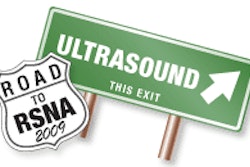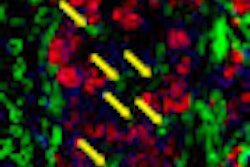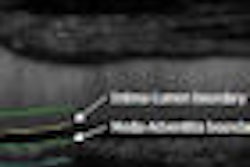ORLANDO, FL - Screening the hearts of top student athletes takes more than just an electrocardiogram (ECG), researchers said on Sunday at the American Heart Association's (AHA) annual conference: Ultrasound is key to finding more athletes at risk.
"In our study, the screening process identified heart abnormalities in 36 of the 134 athletes," said Daniel Bernard, a student researcher at Johns Hopkins University in Baltimore and lead author of the poster presentation.
Of those identified, 22 had abnormalities found by ECG alone. Nine were found only through echocardiography and five abnormalities were detected on both modalities, Bernard said.
"It shows that we need to use both of these devices in order to assure we find all the cardiac abnormalities," said Dr. Theodore Abraham, associate professor of medicine at Johns Hopkins and principal investigator of the trial.
The trial collected data through the Hopkins Heart Hype Program, an initiative to reduce deaths in young athletes by screening them for heart ailments. The current study was performed in partnership with GE Healthcare (Chalfont St. Giles, U.K.), the Maryland Public Secondary Schools Athletic Association, Friends in Red, the Hypertrophic Cardiomyopathy Association, and the Greater Baltimore Chapter of the National Football Foundation. Abraham said the researchers used the GE Vivid i echocardiography device, as well as GE's ECG equipment.
During the Maryland state track and field championship in May 2009, the research team screened 216 high school athletes. Each athlete filled out a medical questionnaire, underwent heart auscultation, had their blood pressure taken, had a 12-lead electrocardiogram recorded, and had echocardiograph studies performed.
Bernard said complete data were available on 134 of the students, forming the basis for his study. About 69% of the students were male, and all participants were asymptomatic without a history of prior heart disease.
The researchers took advantage of the statewide track and field tournament to find elite high school athletes to test, according to Bernard. Although a number of abnormalities were discovered during the screening, he said, "no significant valvular abnormalities or cardiac pathologies were discovered and no athlete needed immediate medical attention."
However, Bernard noted that 25% of the patients screened had abnormalities identified only with echocardiography. "Screening strategies that implement electrocardiography alone may not capture the full spectrum of cardiac abnormalities in athletes," he said.
"The bottom line is that one modality just is not adequate," Abraham said.
By Edward Susman
AuntMinnie.com contributing writer
November 16, 2009
Related Reading
Markedly abnormal ECGs in young athletes linked to risk of cardiomyopathy, January 11, 2008
CT scans can spot deadly heart flaws in athletes, April 27, 2007
Scout view: Imaging helps football prospects sack injuries at NFL Combine, February 20, 2007
Endurance sports may harm the heart: study, January 23, 2007
Screening seen unlikely to detect at-risk athletes, June 9, 2004
Copyright © 2009 AuntMinnie.com



















